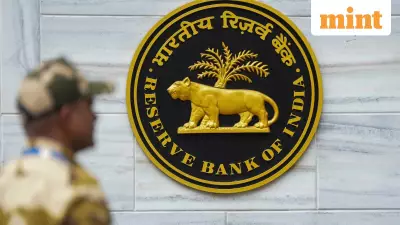
Foreign Investors Return to Indian Financial Stocks with $1.5 Billion Bet
India's banking and financial sector is witnessing a remarkable resurgence in investor confidence, with foreign portfolio investors (FPIs) injecting $1.5 billion into the segment during October 2025. This represents the highest inflow in six months and marks a dramatic reversal from August, when FPIs had withdrawn $2.66 billion amid global uncertainty triggered by US tariff announcements.
Why Banking Stocks Are Escaping Tariff Impact
Market participants attribute this renewed optimism to lenders' reassurance that the impact of US tariffs on their loan books would be minimal. While sectors like seafood and textiles face significant exposure to US markets, banking appears relatively insulated from direct hits, though second- or third-order effects remain possible according to fund managers.
Trupti Agrawal, fund manager at WhiteOak Capital AMC, explained: "The selloff in August was mainly triggered by the US tariff announcement, which opened a can of uncertainty. Banking faces no direct hit, although second- or third-order effects are possible."
Specific concerns about bank exposure to Tamil Nadu's textile hub have been addressed by regional lenders. Both Karur Vysya Bank and City Union Bank clarified that their exposure to the sector was less than 2%, with City Union Bank revealing that exposure to US exports constituted just 0.27% of its loan book.
Strategic Investments Signal Long-Term Confidence
The current FPI inflow isn't fleeting capital but represents strategic, long-term investments. Recent months have seen several landmark deals where foreign investors acquired controlling stakes and board seats, demonstrating strong conviction in the sector's potential.
Notable transactions include:
- Dubai's Emirates NBD acquiring a ₹26,850 crore ($3 billion) majority stake in RBL Bank
- Japan's Sumitomo Mitsui investing ₹16,333 crore for a 24.2% stake in Yes Bank
- Blackstone picking up 9.9% in Federal Bank for ₹6,196 crore in October
- Warburg Pincus and ADIA investing up to ₹7,500 crore for 15% of IDFC First Bank in April
The sector's outperformance is evident in index movements. The Nifty Bank and Nifty Financial Services indexes have risen 16% and 14% respectively in 2025, significantly outpacing the Nifty 50's 8% gain.
Domestic Investors Join the Financial Sector Rally
The enthusiasm isn't limited to foreign investors. Domestic institutions are equally bullish, with Bajaj Finserv AMC launching its Banking and Financial Services new fund offer that opened on November 10 and closes on November 24. Another fund house is preparing a similar offering, according to sources familiar with the plans.
Hiten Jain, equities fund manager at Invesco Mutual Fund, highlighted the improving liquidity environment: "The Reserve Bank of India has reduced the cash reserve ratio for banks by 100 basis points and cut the key repo rate by 100 bps during the past 9-12 months, apart from taking steps to boost liquidity amid a steady decline in inflation."
This supportive policy environment has boosted domestic credit growth to 11.4% year-on-year from a low of 9% several months ago, with asset quality concerns in retail loans also easing.
Valuation Opportunity and Future Outlook
Despite the strong performance, valuation opportunities remain. Most financial services stocks trade below their five-year average multiples, with large cap lenders showing approximately 15% undervaluation compared to broader market historical averages.
Sorbh Gupta, head of equity at Bajaj Finserv AMC, noted: "Historically, in an economic upcycle, credit growth tends to accelerate, leading the BFSI sector to outperform other sectors and the broader market. The returns for a banking fund are closely tied to the pace of economic activities."
The sector's diversification also offers investors multiple avenues for participation. Public and private banks now constitute less than 60% of the Nifty Financial Services Index, with the remaining 40% comprising capital market players including fintech, insurance, and asset management companies.
Looking forward, CareEdge Ratings senior director Sanjay Agarwal projects credit offtake at 11.5%-12.5% year-on-year for FY26, with bias toward the upper level. State Bank of India, the country's largest lender, has projected credit growth of 12-14% in FY26 and aims to double its balance sheet every six years.
While high interest rates and global uncertainties pose potential challenges, the medium-term outlook remains promising with diminished corporate stress, substantial provision buffers, and multiple growth drivers supporting the sector's continued outperformance.





